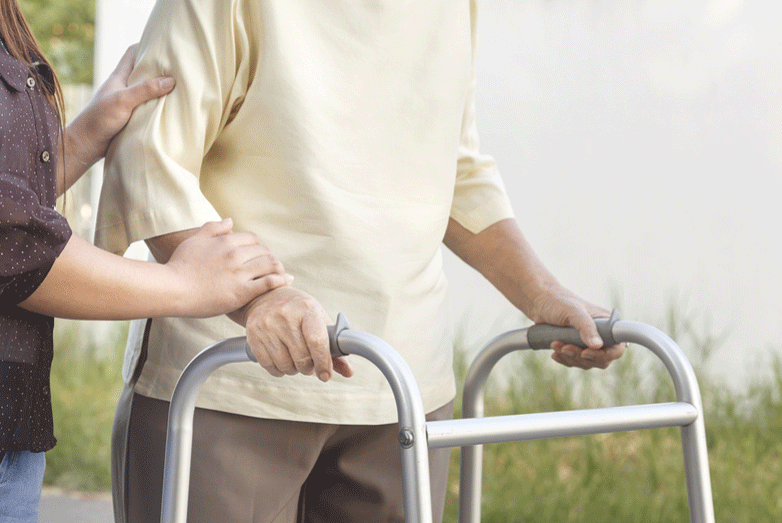The following walker safety tips help prevent injury or harm when sitting down, standing up and going up or down a curb with your walker.
The Most Important Walker Safety Tips
It’s important to walk as much as possible in order improve strength and prevent deterioration of muscles, that means your walker should get a lot of use. Stay safe with these important walker safety tips…
-Never take a step forward without making sure all four wheels or legs of your walker are firmly planted on the ground.
-Maintain a straight line from the walker’s back legs to your toes; this helps prevent your walker from getting away from you.
-Do not pull up on your walker when you stand up from a seat. Instead, push up from your seat.
-Maintain good posture with a straight back; avoid leaning over your walker.
-Use extra caution when transitioning from one floor surface to another, such as carpet to tile. Exercise this same caution when entering and exiting elevators.
-Do not use the stairs or an escalator with your walker.
-Frequently inspect the rubber tips on your walker legs and replace them as soon as they appear worn out. New tips are available for sale at drug stores and medical supply dealers, as well as online.
-Work with your physical therapist to uncover the best methods for safe walker usage based on your personal needs.
How To Use Your Walker
Your walker is there to help support you every step of the way, but in order to get the most out of it you’ll need to use it properly.
-First and foremost, make sure your walker is positioned out in front of you, about an arm’s length away.
-Check to ensure all four legs or wheels of your walker are firmly on the ground before you take a step.
-Start walking with your weak (or weaker) leg first, keeping your stronger leg firmly planted on the ground. Step forward with your weaker leg, and repeat.
-Go slow and maintain good posture, keeping your back as straight as possible.
Sitting To Standing With A Walker
-Make sure your walker is facing you with the open side towards you.
-Check that all four wheels are firmly on the ground.
-Lean forward just slightly and use strength from your arms to help push yourself up. As you stand, be careful that you don’t pull up or tilt your walker. The chair armrests or handrails may come in handy, and don’t hesitate to ask for help if you need it.
-Once standing, take hold of the walker handles.
-Take your time and make sure you feel steady and balanced before you start walking forward. It might take a step or two before you are able to stand up completely straight.
Standing To Sitting With A Walker
-Scoot towards your intended destination, be it a chair, bed, toilet, etc. Stop when you can feel it touching the backs of your legs.
-Check to make sure all four legs of your walker are on the ground.
-Keep one hand gripping onto your walker, and with your other hand reach back for an armrest on the bed, toilet or chair behind you. If both of your legs are injured, reach back with one arm followed by the other.
-Lean your body forward and step forward with your weaker leg.
-Carefully ease down into the chair and then slide back into position.
How To Get Up & Down Curbs With A Walker
If you are going up the curb, place your walker up on the step in front of you. If all four of your walker legs are on the ground, step up with her strong leg first. Shift all of your weight onto your walker as you bring your weaker leg up on the curb.
If you are going down the curb, place your walker beneath the step in front of you. It is especially important that all four points of your walker are firmly on the ground. Step down the curb with your weaker leg first and place all of your weight onto your walker. Lastly, bring your stronger leg down the curb to meet your weaker leg.
Non-Emergency Medical Transportation For Patients With Walkers
Oftentimes, patients with walkers are not able to drive but they still have doctor appointments and other places to be. That’s where Stellar Transportation comes in handy; we offer leading non-emergency medical transportation catered to your individual needs. Contact us today for a free quote.

